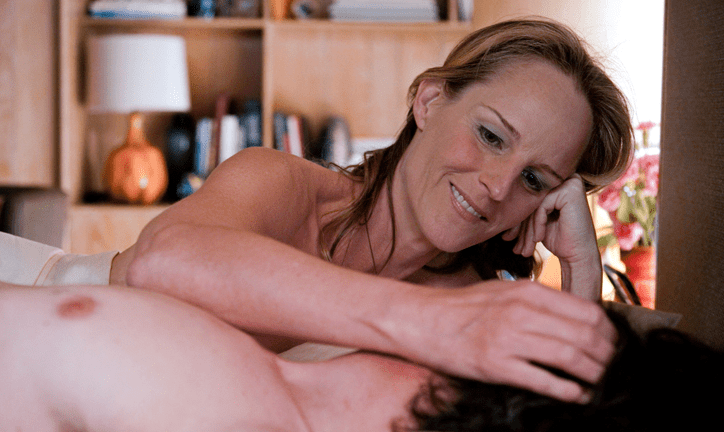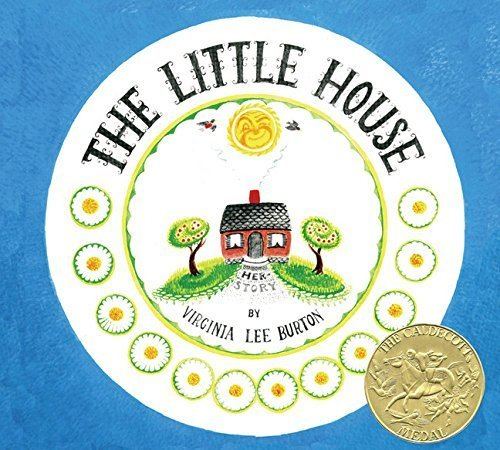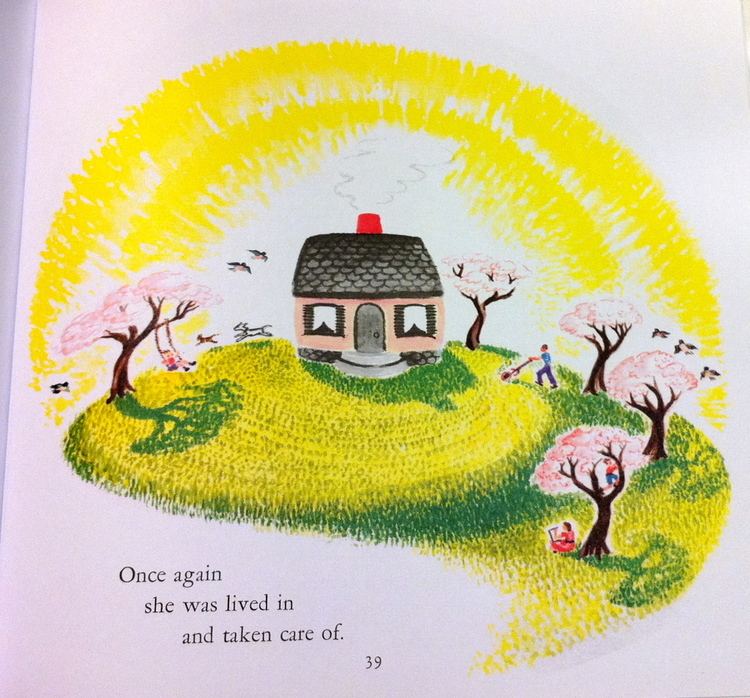The Little House
8 /10 1 Votes
Country United States | Genre Childrens picture book | |||||||||||||||||||||||||||||||||
 | ||||||||||||||||||||||||||||||||||
The Little House is a 1942 book written and illustrated by Virginia Lee Burton.
Contents

Inspiration

Author Virginia Lee Burton has stated that "The Little House was based on our own little house which we moved from the street into a field of daisies with apple trees growing around." Burton denied it was a critique of urban sprawl, but instead wished to convey the passage of time to younger readers. Being a very visually driven book, many times Burton changed the amount of text to fit the illustration. "If the page is well drawn and finely designed, the child reader will acquire a sense of good design which will lead to an appreciation of beauty and the development of good taste. Primitive man thought in pictures, not in words, and this visual conception is far more fundamental than its sophisticated translation into verbal modes of thought."
Story

The story centers on a house built at the top of a small hill, far out in the country. Her builder decrees that she "may never be sold for gold or silver" but is built sturdy enough to one day see his great-great-grandchildren's great-great-grandchildren living in her. The house watches the seasons pass, and wonders about the lights of the city, which grow ever closer.

Eventually a road is built in front of the house. This is followed by roadside stands, gas stations, and more little houses. Next, the small houses are replaced by tenements and apartments. Streetcars, an elevated railroad, and a subway appear to surround the house. Finally, two gigantic skyscrapers are built—one on each side; now living in the city, the house is sad because she misses being on the small hill in the countryside and that her exterior looks shabby due to no one living in her and the city's environment thanks to urban sprawl and poor planning.
One day the great-great-granddaughter of the builder sees the house and remembers stories that her grandmother told about living in just such a house, albeit far out in the country. When the great-great-granddaughter discovers that it is the same house, she arranges to have her moved out of the city, to a hill in the country where she can once again watch the seasons pass and live happily ever after.
Adaptations
The book was also made into a 1952 animated short by the Walt Disney Company, directed by Wilfred Jackson and narrated by Sterling Holloway. It has also been released as an audio book. The apartments and skyscrapers from the Disney adaptation of "The Little House" make a cameo appearance in Toontown in Who Framed Roger Rabbit.
1952 film
The story centers on a house built at the top of a small hill, far out in the country, who is delighted when a newleywed couple choose her for a home. However, the house feels lonely at night and wonders what it might be like to have other houses to talk to, often gazing at the lights of the distant city (known as urban sprawl), which can grow even more closer. Eventually two stately Victorian mansions are built on either side of the Little House. She is happy to have some neighbours at last, but is offended when the mansions rudely look down on her for being inferior. One night, a fire breaks out by unknown cause and both of the mansions burn down to the ground and got destroyed. The Little House considers this a pity, even though they weren't very nice. The cartoon then switches to the 20th century, and the Little House is shown to have had two tall tenement buildings built on either side of her. Sadly, her family moves away to escape all the noise that the residents in both buildings make, but the house reminds herself that come what may, she must stand her ground. Years pass, and the tenements get demolished to make way for three towering skyscrapers. By this time, the Little House has become battered and worn with age and has begun to long for her old life the small hill in the countryside. One day, a wrecking crew comes, presumably to demolish her, but the Little House doesn't mind because she has come to consider herself that she's "just in the way" and "no good to anybody." She also resolves that she should be glad she has lived for as long as she did. However much to her delight, it turns out that they had come to move her out to the country and fix her up so that a new couple can come and live in her.
Critical reception
The book has been noted for its insights on urban sprawl. It won the 1943 Caldecott Medal. It was identified as one of the top 100 best books for children by the National Education Association in 1999 and 2007 polls. It was one of the "Top 100 Picture Books" of all time in a 2012 poll by School Library Journal.
